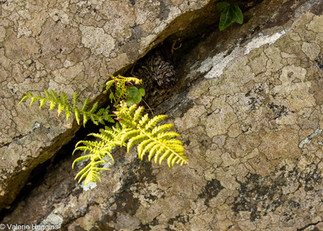Dartmoor strolling
- valeriehuggins0
- Aug 12, 2024
- 4 min read
A walk on Dartmoor is always good for soul. Open spaces, quiet away from the urban hubbub and with wonderful vistas to immerse oneself in. It was the first Dartmoor outing for my partner after his hip replacement so we chose the short walk to Buckland Beacon as it is accessible and fairly flat.

Although Buckland Beacon stands 383 metres above sea-level, you can drive up on to the moor and then walk about a kilometre to it, following the path by a beautiful dry stone wall. One of the 160 tors on the Moor, it is well-known for its Ten Commandments which are carved on to two flat stones of the tor, created in 1927-28 and restored in 2016. The tor itself is easy to climb and there are 360 degree views from the top.
As we walked along I was surprised by how quiet it was considering it was such a lovely day. We usually encounter several walkers with dogs on this route, but today we had the place to ourselves. Such a pleasure. Many of the hedges on the moor are 'bank hedges' where trees are planted on top of a mound of earth to be coppiced. Here, it was a single wall of stone, made from the granite stones cleared from the surrounding land, and containing mica, quartz and felspar. The wall is almost sculptural in the way it emerges from the landscape, like something the eco-artist Andy Goldsworthy might have created.
I look closely and each stone is a unique shape and I can sense the care of the maker. ‘This is what I describe as a single faced granite stone wall,’ says Martin, a stone-waller. ‘The peculiar thing, apart from them being single faced, is they've got a vertical batter: they need to be built really long at the base, with through stones - the bigger the better. And you don't want the top stone too thin, because they'll just get knocked off - they're the first things to go if a sheep's trying to get over.’
As we walked, I got fascinated by the relationship between the wall and the barbed wire (of all things!), struck by the contrast between the authentic stone and the manufactured, industrial metal, and how they worked together to create a barrier. I took a set of 'wire stories' as I walked - bizarre when the views were so lovely!
I started to see creatures and figures in the entanglements of the wire, the contract between the new and the rusted, with the spikiness adding energy:
When we reached the tor I took some record images of the stones, marveling at the handiwork:
I enjoyed looking at the range of flora, amazed at the spaces plants find to root themselves in this often windswept environment:
I was saddened though by how few flying creatures there were. I spotted a few butterflies, and heard some bees in the heather, but much less than I noted last year. I walked across to the gateway and enjoyed the view down to the coast. I could see Teignmouth and Shaldon quite clearly in the distance, at the mouth of the RiverTeign that rises on Dartmoor above Chagford.
I sat high on the rocks and looked out over the landscape. I remembered that one of the photo-challenges for this month was 'Boundaries' and this prompted me to think about the boundaries in this landscape and what they represented. I noticed the patchwork of fields, different shades of green in the sunshine. And my mind drifted, thinking of the humans that had shaped this landscape over 5000 years of farming and creating boundaries. What to keep inside the boundary. What is being kept outside. And how we as humans do this socially and emotionally in our lives. Who 'belongs', 'fits in' and who we exclude.
The hedges that frame the fields are shaped by the farmers, and they decide which trees are allowed to stay. An isolated tree in a hedgeline caught my eye. I thought how lonely it looked, and was reminded of the fascinating book Finding the Mother Tree by the ecologist Suzanne Simard. I hoped that the hedgerow plants were giving this tree support through the Wood Wide Web. The woodland areas I could see were mainly non-indigenous conifers planted after the First World War because of a timber shortage. There is a plan to reduce the number of conifers and replace them with broadleaf trees but this will take decades. There is also a tension between competing views of the moor. It needs to function as an ecosystem that enables to wildlife to thrive, mitigates for climate change, provides sustainable food and water as well as provide opportunities for people like myself to enjoys its natural beauty and heritage.
Warmed by the summer sun I settled in the shelter of the beacon and gathered my thoughts on the concepts of 'boundary'. What are my edges, limits? How far will I tolerate the boundaries that are imposed upon me? When will I rebel and cross the line?
And while I indulged in my pursuit of boundaries, what was my companion doing I hear you ask. Well, he found his own way of escaping while being held in the embrace of the stones:

NB Accessible Dartmoor gives ideas for easy walks.
#boundaries; #dartmoor; #bucklandbeacon; #stonewalls; #tencommandments; #barbedwire; #findingthemothertree



























































Great blog article. If you are looking for further walks, the National Park have
some “Miles without Styles” routes in their portfolio. All are accessible and they vary from short to long. There are different categories, Grade 1 really easy and Grade 2/3 more challenging, sometimes it’s just steep camber or water drainage channel that might be unsettling for wheelchair users.
They have added some more routes, as it’s a 3 year project. https://www.visitdevon.co.uk/blog/post/accessible-routes-across-dartmoor/